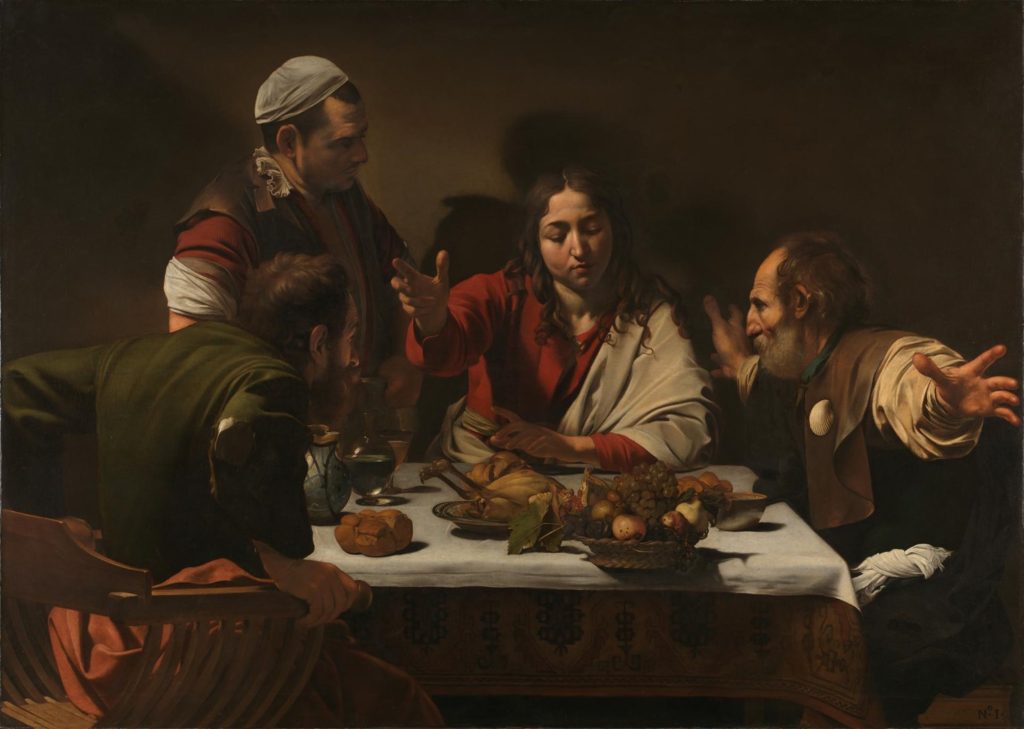Spiritual Sunday
I’ve just made a connection that I should have made long ago. Mary Oliver’s “The Fish,” which I’ve taught many times when teaching her American Primitive collection, is about Luke 24:36-48, today’s Gospel reading.
The reading is about one of those moments following the Resurrection where Jesus appears to the disciples. We aren’t told exactly how he appears—he appears to just materialize—but to assure his followers that he something more substantive than a ghost, he eats some food. Here’s the passage:
While they were still talking about this, Jesus himself stood among them and said to them, “Peace be with you.”
They were startled and frightened, thinking they saw a ghost. He said to them, “Why are you troubled, and why do doubts rise in your minds? Look at my hands and my feet. It is I myself! Touch me and see; a ghost does not have flesh and bones, as you see I have.”
When he had said this, he showed them his hands and feet. And while they still did not believe it because of joy and amazement, he asked them, “Do you have anything here to eat?” They gave him a piece of broiled fish, and he took it and ate it in their presence.
He said to them, “This is what I told you while I was still with you: Everything must be fulfilled that is written about me in the Law of Moses, the Prophets and the Psalms.”
Then he opened their minds so they could understand the Scriptures. He told them, “This is what is written: The Messiah will suffer and rise from the dead on the third day, and repentance for the forgiveness of sins will be preached in his name to all nations, beginning at Jerusalem. You are witnesses of these things.”
In “The Fish,” one encounters images of violence and death, followed by an initiation into mystery. The poet carefully preparing the fish echoes the eucharistic feast, just as Jesus eating the fish brings to mind the Last Supper. Oliver, who was a practicing Episcopalian, came out of an American tradition (which includes Ralph Waldo Emerson and Emily Dickinson) of finding God in nature. What she describes as the “feverish plot” is our life and death, and while it often involves pain, we are at the same time nourished by mystery—the mystery of our interconnection with nature, the mystery of whatever awaits us after death. Oliver describes this drama elsewhere (in “In Blackwater Woods”) as follows:
Every year
everything
I have ever learned
in my lifetime
leads back to this: the fires
and the black river of loss
whose other side
is salvation,
whose meaning
none of us will ever know.
In the eucharist, of course, Christians symbolically eat the flesh of Christ and drink of his blood in order to be one with God. Think of that as you read the poem:
The Fish
The first fish
I ever caught
would not lie down
quiet in the pail
but flailed and sucked
at the burning
amazement of the air
and died
in the slow pouring off
of rainbows. Later
I opened his body and separated
the flesh from the bones
and ate him. Now the sea
is in me: I am the fish, the fish
glitters in me; we are
risen, tangled together, certain to fall
back to the sea. Out of pain,
and pain, and more pain
we feed this feverish plot, we are nourished
by the mystery.


